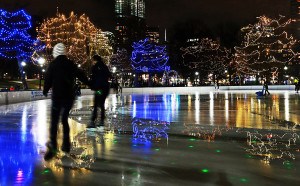How to Stargaze in Boston

Photo via Istock.com/Thomas Tuchan
“If you ask a professional astronomer what’s up in the sky they’ll say ‘I have no idea,’” says MIT astronomy professor Amanda Bosh. But you don’t need an astronomer to tell you what to look for in the night sky this summer. For the casual stargazer, there’s plenty to see without a PhD, so why not do some exploring of your own? This summer hosts several stunning celestial events that city dwellers shouldn’t miss just because of a little light pollution. Bosh gave us a few pointers on how to city stargaze this summer despite urban light pollution. Whether you decide to head to an observatory, use your own portable telescope, or scan the sky with your naked eye, there are plenty of places to gaze in the Boston area.
Places to Gaze
Museum of Science
On Friday evenings from 8:30-10 p.m., the Museum of Science opens the Gilliland Observatory for “Astronomy After Hours.” These free -of-charge, guided stargazing events occur from March through mid-November, weather permitting.
Boston University
For midweek viewings, the Boston University Colt Observatory opens to the public every Wednesday they see fit for stargazing. In addition to guided observing, guests have the chance to learn a thing or two about astronomy from the observatory’s experts. Admission tickets are available a week in advance and are free of charge.
Grape Island
If you’re up for an all-in adventure, camp out under the stars on Grape Island in Boston Harbor. Located 10 miles offshore, the island stays fairly sheltered from light pollution, making for spectacular sky views.
Your Own Backyard/ Rooftop/ Local Park
While it might sound impossible to do any sufficient stargazing downtown, Bosh says that there is still plenty to see from the heart of the city as long as you find a reasonably shadowy spot and avoided going gazing, say, next to Fenway on Red Sox game nights (hello, floodlights). Even city apartment roof tops and porches make for prime stargazing spots on darker nights. In fact, Bosh’s class does their primary research right on MIT’s campus. “My class does all of our stargazing from the rooftop in Cambridge. We still have plenty of things to see and discuss.”
Things to Look Out For
Meteor showers
While a handful of circumstances must align in order to see a truly spectacular meteor shower, there are several opportunities to make a wish on shooting stars this summer. You may catch a glimpse of the Delta Aquarids and Alpha Capricornids (July 27-29), but your best bet will be the Perseids shower (August 12.) Bosh recommends heading out to a shadowy place between midnight and sunrise.
Planets
Mars and Saturn are well-positioned this summer, and, come August, you’ll be able to spot the stunning alignment of Jupiter, Mercury, and Venus over a clear horizon just after sunset. The planets appear to align in a straight line across the sky from south west to west. “Something really interesting about stargazing is, depending on the color receptors in your eyes, the clarity of the night, and/or the strength of your telescope, you might even be able to distinguish the individual color of each planet,” says Bosh.
Satellites
While they aren’t natural wonders, satellites are an amazing site to behold. For a list of satellites that are in view from Boston, type your location into heavens-above.com. Once you add your location, click on Satellites at the ISS (International Space Station) or Iridium Flares (which are reflections of the sun’s light off of iridium satellites), and they will direct you to lists of the best times and dates to see “the brighter satellites to view.” according to Bosh.
For more information on sites and events, see:
Museum of Science
BU Observatory
Boston Harbor Islands
Heavens Above
American Meteor Society


